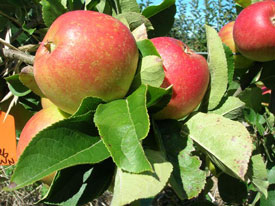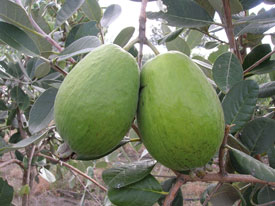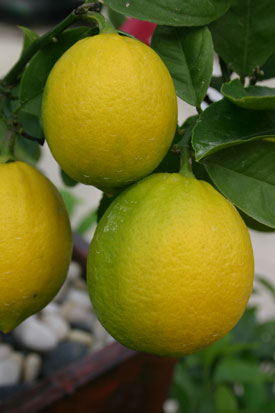Fruit in small spaces
Seven space-saving ways to grow your own fruit
Stepping outdoors to pick fresh home-grown fruit is something every gardener deserves to do. With a bit of planning, even a tiny, inner city courtyard can accommodate a good range of delectable edibles…
1. Smaller by design
Most fruit trees can be pruned to restrict size, but dwarfing rootstocks and modern breeding make life easy; providing us with trees that remain small while still producing very high yields.
Dwarf Apple Blush Babe™ grows to only 2m tall with tasty, juicy fruit within two years of planting. The only truly dwarf pear to date, Garden Belle grows just 3m tall. Peach ‘Honey Babe’, Nectarine ‘Garden Delight’ and Apricot ‘Aprigold’ grow into neat rounded trees on 1m trunks.
Bred specifically for small spaces, tall slim Ballerina apple trees can be grown just about anywhere –in borders, containers, along paths, against fences, as a screen, or trained as an archway. Only minimal pruning is required.
2. Wall art
The age-old craft of espaliering is highly decorative and very high yielding. Trees can be trained flat against a solid wall, or trained on a post and wire frame. Many fruit trees are suitable, including fig, pear, quince, apple, plum and citrus. Find out how.
3. Pergolas, posts and archways
A pergola attached to the house is a lovely way to create shade and makes an inviting outdoor room when draped with fruiting vines. A wide selection of modern table grapes is on offer. Another option is passionfruit.
4. Container culture
Strawberries look pretty cascading over the edge of pots, tubs and planter boxes. Dwarf pip and stone fruit, and Ballerina varieties are ideal for containers. Citrus have been grown this way for centuries. Try Clementine mandarin, Meyer lemon or limes. Figs and olives are often grown in containers to restrict their size. Containers need to be at least 50cm wide and deep to accommodate a fruit tree. Half wine barrels are excellent. Regular watering and feeding is paramount.
5. Self-pollinators
While some fruit trees need a mate for pollination (this may be your neighbours tree) many are self-pollinating. However, even if they are self-fertile, many fruit trees will produce bigger crops if cross-pollinated. The added benefit of planting more then one variety may be a longer fruiting season. For example, complementing early ripening feijoa ‘Kaiteri’ with a later ripening variety will spread the harvest from March to June.
6. High health
Especially when space is limited, it makes sense to aim for blemish-free fruit with little or no spraying. Make it a priority to select the most disease resistant varieties for your climate.
7. Multi-function
If you have space for just one feature tree make it a fruit tree. Some of the most attractive include persimmon, cherry, plum, olive and avocado. Go for a deciduous tree if you don’t want to block winter sun.
A citrus topiary makes a wonderful focal point for a small courtyard, pruned to a simple round-headed lollipop shape. Feijoa and guava are also easy to train as topiary.
Feijoas, blueberries and Chilean guava are ideal as hedging. Rhubarb leaves bring fabulous contrast anywhere in the garden. Strawberries and Orangeberry make great ground cover plants. Plant thorn-free brambles as space fillers.
Fruit trees need:
- Sunshine
- Shelter
- Good, humus rich soil
- Drainage.
For help selecting fruit tree varieties visit:
2-Feb-2014

Apple Blush Babe

Apple Ballerina

Feijoa Kaiteri

Lemon Meyer

Apple Ballerina Polka


